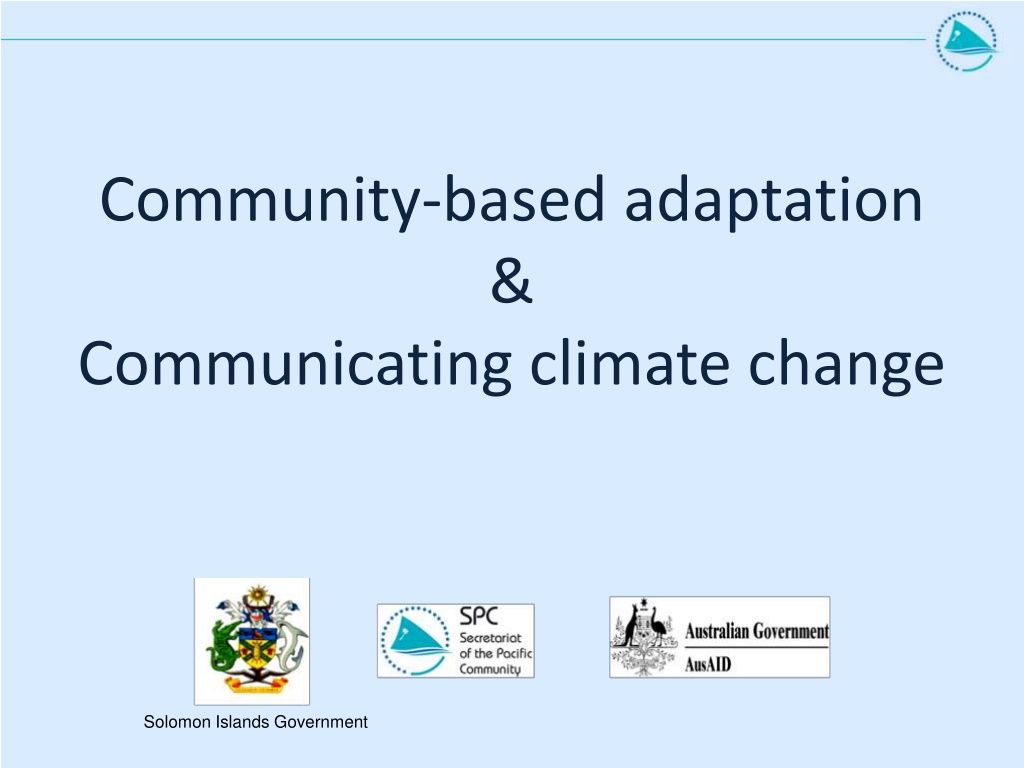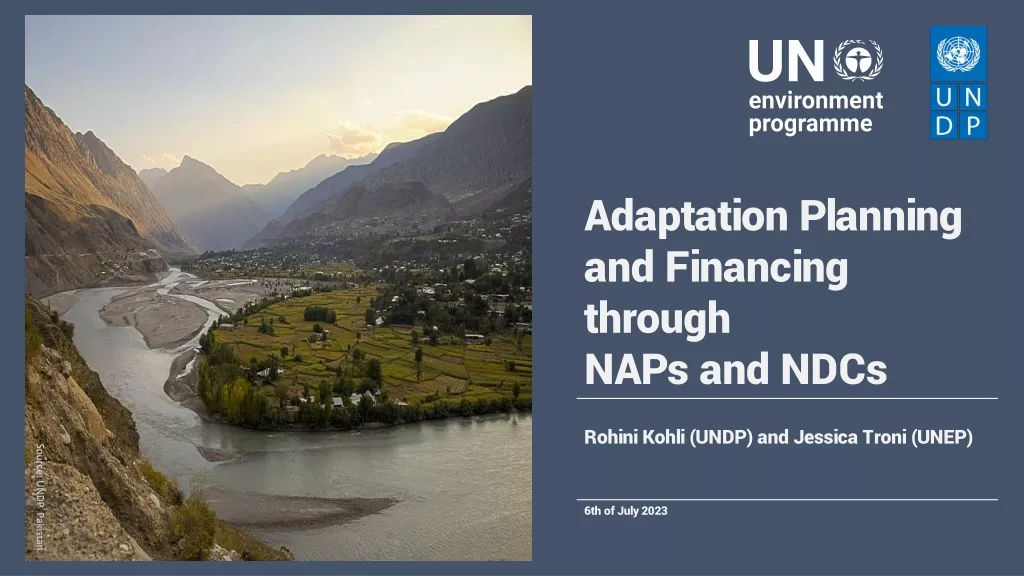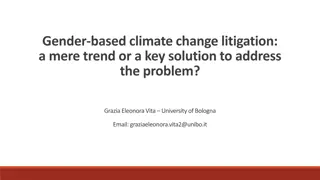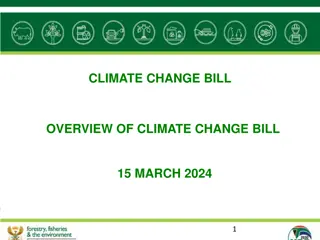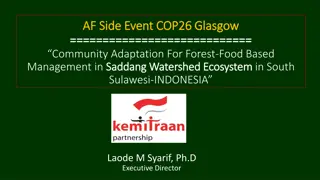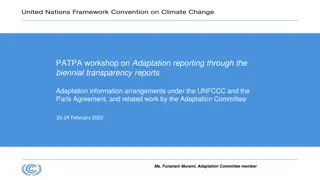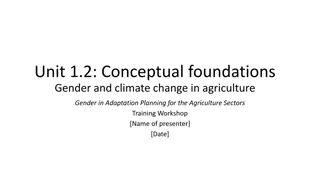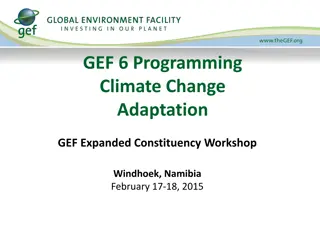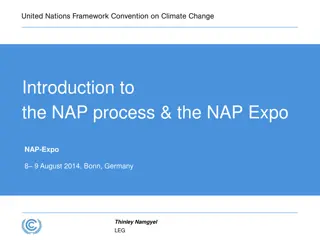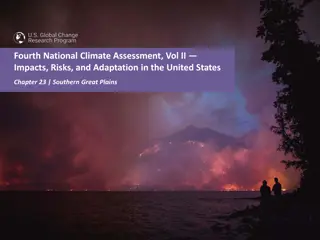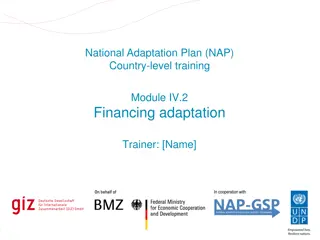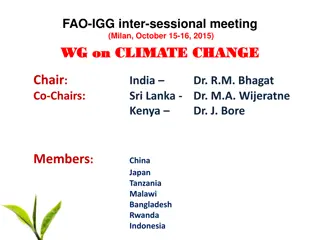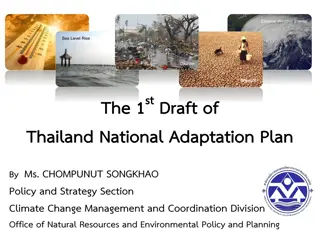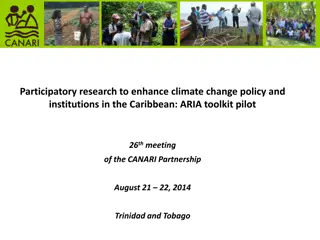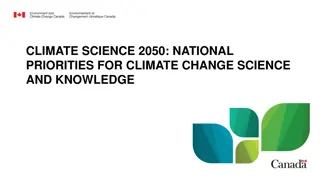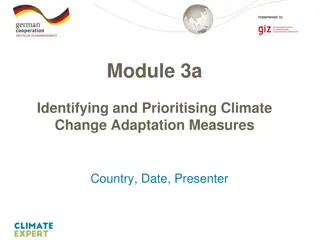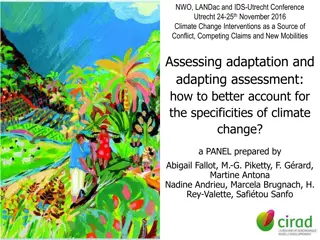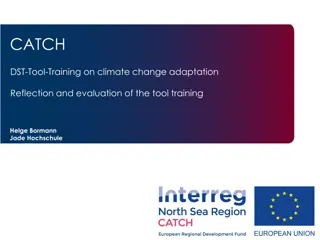Community-based adaptation & Communicating climate change
In the Solomon Islands Government, community-based adaptation strategies are vital to address the impact of climate change. This involves localizing vulnerability assessments, utilizing existing knowledge, and enhancing community capacity. The challenge lies in balancing sensitivity, exposure, adaptive capacity, and potential impact to reduce vulnerability. With limited resources, multi-sector involvement, and long-term community capacity building, communities can effectively respond to current and future climate-related challenges. Through integrating community knowledge, identifying key activities, and planning for resilient futures, pathways to adaptation can be developed to address environmental and social issues.
Download Presentation

Please find below an Image/Link to download the presentation.
The content on the website is provided AS IS for your information and personal use only. It may not be sold, licensed, or shared on other websites without obtaining consent from the author.If you encounter any issues during the download, it is possible that the publisher has removed the file from their server.
You are allowed to download the files provided on this website for personal or commercial use, subject to the condition that they are used lawfully. All files are the property of their respective owners.
The content on the website is provided AS IS for your information and personal use only. It may not be sold, licensed, or shared on other websites without obtaining consent from the author.
E N D
Presentation Transcript
Community-based adaptation & Communicating climate change Solomon Islands Government
Outline Localising vulnerability assessments from regional to local knowledge Community-based adaptation Communicating climate change Community capacity and participation
The Challenge Sensitivity Exposure Potential impact Adaptive capacity Vulnerability ?
Community-based adaptation Resources are often limited Multi-sector (e.g. fisheries, agriculture, forestry) Use existing knowledge and information Scaling down from regional to community level Long-term community capacity Pathway from assessment to action
Existing knowledge and information Main food sources and livelihood activities Important community assets & values Links between climate and activities Past response to change (e.g. natural disasters) Current environmental & social issues Future issues (e.g. climate change, access to markets)
Community knowledge key activities assets & values Existing information climate resource condition Drivers of change current issues climate change Future vision range of options desirable Community adaptation actions review & revise
Building resilient futures Torres Strait October 2012 A participatory approach for determining adaptation actions and considerations for their implementation
Pathway to Adaptation Identifying options Evaluation of options (i) Describe adaptations and their cost Planning implementation Scoping (i) Current and likely future impacts of climate change? (i) Best adaptations to employ Fishing & farming livelihoods: (ii) Social, economic or environmental triggers to start implementing (ii) People, organisations and institutions to facilitate adaptations (ii) Desirable future for farming and fishing (i) key issues (ii) drivers of change (iii) Adaptation actions to address impacts and reach desired future (iii) Likely impact of the adaptations on the natural resource
Current climate How do current trends in temperature and rainfall affect fishing and farming activities? Source: S. Park (WFC)
Community knowledge key activities assets & values Existing information climate resource condition Drivers of change current issues climate change Future vision range of options desirable Community adaptation actions review & revise
Communicating climate change Raise awareness of climate change to assist with decision-making & planning Understand climate change issues and concepts before talking to others Community needs to understand and support adaptation activities Link to local culture, environment and social context (e.g. high dependence on fish for food) Find ways to include climate change into existing initiatives (e.g. EAFM) Build on people s knowledge and experiences
Communication tools Workshops village, schools, youth and women s groups, council meetings Videos awareness programs, target difference ages, language groups Media Newspaper, TV, radio Information sheets & posters Interactive activities poster competitions, open days, school quizzes, radio talk shows KEEP MESSAGES SIMPLE
Communicating: present Lobster life cycle
Challenges Communicating complex concepts in simple language Building local capacity and maintaining motivation Working with remote communities Self governance takes longer but often more effective than regulation
Conclusions Incorporate traditional knowledge into adaptation strategies Work across scales (local, national, regional) and sectors (fisheries, forestry, agriculture) Largely participatory; building local capacity Rapid and action-orientated Local knowledge provides relevance
Thank you j.johnson@c2o.net.au
